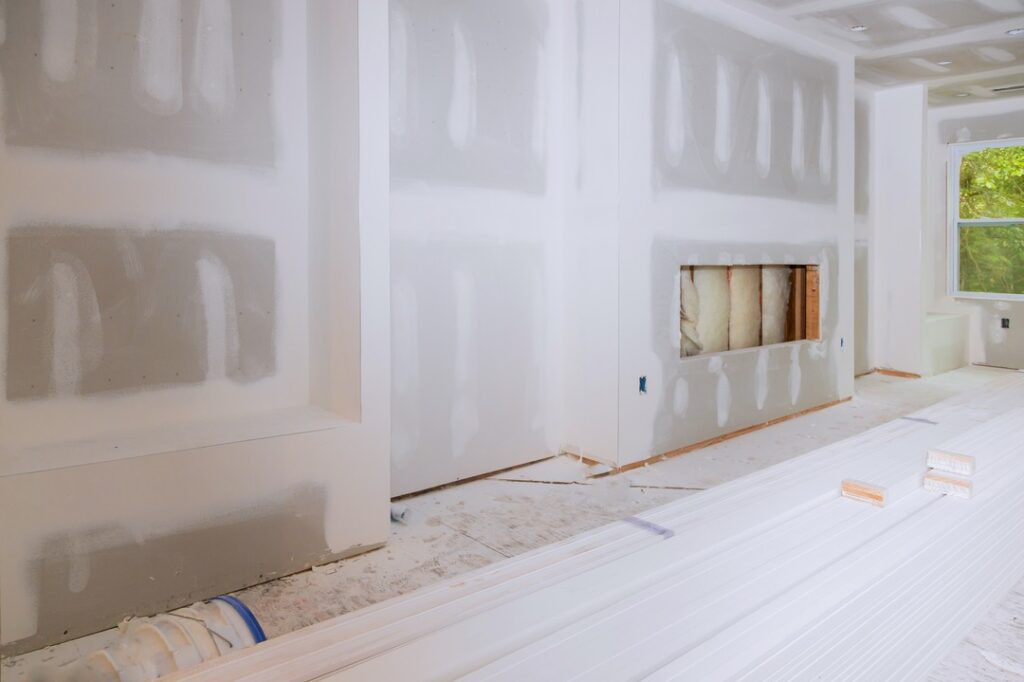Have you ever asked yourself, “What are walls made of?” It’s one of those questions that seems simple, but once you dig into it, there’s a lot to uncover. If you’ve recently moved into a new home, started a renovation project, or simply noticed a hole in your wall, understanding drywall becomes essential. From installation to repair and finishing, drywall is at the heart of most modern construction projects.
This article will walk you through everything you need to know about drywall, including types, repair basics, and final finishing touches. Whether you’re curious about what’s behind your paint or knee-deep in a DIY project, we’ve got you covered.
What Are Walls Made Of?
Interior walls have evolved quite a bit over time. Historically, walls were made with materials like plaster over wooden lath, which created a sturdy but labor-intensive finish. While striking in appearance, plaster wasn’t particularly cost-effective or easy to work with. Enter drywall, which revolutionized the construction industry thanks to its affordability and simplicity.
What Exactly is Drywall?
Drywall is a panel made of gypsum sandwiched between two thick sheets of paper. Gypsum, a naturally occurring mineral, is fire-resistant, lightweight, and easy to cut, making it ideal for construction.
Today, drywall (also known as wallboard or sheetrock) is the standard material for building interior walls and ceilings in homes and offices alike.
Why is Drywall the Go-To Choice?
The popularity of drywall boils down to a few key factors:
- Cost-effectiveness: Drywall is significantly cheaper and less labor-intensive to install compared to plaster walls.
- Ease of installation: Drywall sheets come in standardized sizes, making them simple to measure, cut, and secure.
- Versatility: With a variety of options for moisture resistance, fire safety, and soundproofing, drywall fits countless scenarios.
The Different Types of Drywall
Not all drywall is created equal. Depending on your project’s needs, you’ll want to choose the right type. Here are the most common types and their applications:
1. Standard Drywall
This is your everyday drywall, perfect for general use in interior walls and ceilings. It’s lightweight, easy to hang, and the most budget-friendly option. A true staple in modern construction.
2. Moisture-Resistant Drywall (Green Board)
Green board is designed for areas prone to moisture, like bathrooms or kitchens. While it’s not fully waterproof, it adds an extra layer of protection against humidity compared to standard drywall.
3. Fire-Resistant Drywall (Type X)
Used in areas where fire safety is critical, such as garages, basements, or walls near furnaces, Type X drywall contains special additives that slow the spread of flames.
Drywall Repair Basics
No matter how strong your walls are, accidents happen. Whether it’s a hole from a doorknob or cracks from settling, here’s how you can handle common drywall issues.
Common Issues:
- Small holes or cracks: These can be patched using a simple drywall repair kit.
- Larger holes: For this, you’ll need to cut out the damaged section and replace it with a new piece of drywall. Secure it with screws, tape the seams, and apply joint compound to blend it seamlessly.
- Water damage: If water has soaked into the drywall, replacement is usually the best option, as moisture can lead to mold.
When in doubt, consult a professional to assess whether a repair or full replacement is necessary.
Finishing and Painting Drywall
Once your drywall is installed or repaired, it’s time to give it that polished look. Proper finishing makes all the difference in how your walls will look under paint.
Step 1: Taping and Mudding
After hanging drywall sheets, use joint tape to cover the seams. Apply a layer of joint compound (commonly called “mud”) to smooth over the tape. Repeat as needed for an even surface.
Step 2: Sanding
Once the mud has dried, lightly sand the areas with a fine-grit sanding block to achieve a seamless, smooth finish.
Step 3: Priming and Painting
Before applying paint, use a primer specifically designed for drywall. This will ensure even paint absorption and enhance the final finish. When painting, opt for high-quality paint to achieve a lasting look.
Drywall Maintenance Tips
Like any part of your home, drywall requires care to keep it in top shape. Here are some tips to prevent damage and maintain its longevity.
- Prevent Damage: Install door stoppers and avoid hanging heavy items without proper anchors.
- Clean Gently: Use a damp cloth or sponge to wipe away stains or smudges. Avoid abrasive cleaners that could scratch the surface.
- Watch for Water Damage: Regularly inspect walls near pipes or windows for signs of water staining or mold and address issues promptly.
Let’s Get to Work
Drywall might not always get the spotlight, but it’s an essential player in your home’s structure and aesthetics. Whether you’re installing it for the first time, tackling a repair, or perfecting the finishing touches, a little knowledge goes a long way.
If you’re ready to transform your walls and need a helping hand, contact Allen Drywall. Our team of professionals will ensure your project is completed flawlessly.
